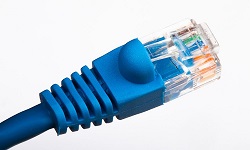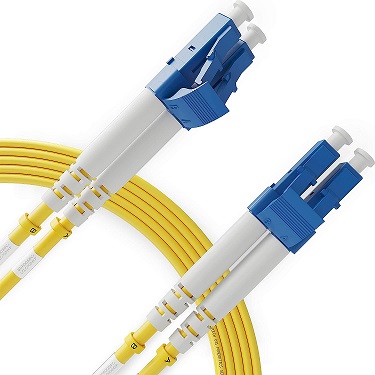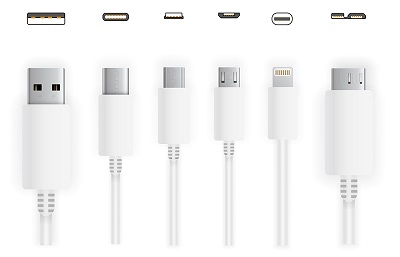Structured Cabling:
Structured cabling, which encompasses the design and installation of a versatile cabling system, plays a crucial role in supporting a wide array of hardware uses and systems. This comprehensive system includes components such as twisted pair cabling, fiber optic cabling, and patch panels, all meticulously organized and standardized based on industry-specific regulations.
The applications of structured cabling systems are widespread, spanning across commercial buildings, data centers, and various facilities. These systems provide a reliable, flexible, and scalable infrastructure for data and communication networks. The implementation of structured cabling offers numerous benefits, including streamlined installation processes, cost savings, enhanced network performance, and heightened reliability. Furthermore, structured cabling enables the creation of a future-proof infrastructure capable of seamlessly integrating new technologies and applications.
By prioritizing structured cabling during network installations, organizations can establish a solid foundation for their data and communication needs, ensuring efficient and effective operations.
Table of Contents
How AVN Advisors Handles Structured Cabling:
AVN is dedicated to delivering customized structured cabling solutions that cater to the unique needs of our clients. With a wealth of experience spanning over three decades, we offer a comprehensive range of installation services, including patch cables, camera cabling, and Access Point installations. Our team of experts is committed to delivering exceptional results that you can rely on.
We understand the significance of tailored solutions for each client. Our meticulous approach and unwavering attention to detail ensure that your specific requirements are fully met. At AVN, we are renowned for our commitment to quality and our expertise in network design and installation, guaranteeing a reliable and high-performing cabling infrastructure.
When it comes to professional and efficient cabling installation services, you can trust AVN to exceed your expectations. Contact us today to discuss your project and experience firsthand how our structured cabling solutions can seamlessly meet your unique needs.
Types of Cables:
Structured cabling encompasses various types of cables used in networking, each serving distinct purposes and having specific applications. Now, let’s delve into some common cable types:
- Ethernet Cables: These cables establish connections within a local area network (LAN), offering different categories such as Cat5, Cat6, and Cat7, which deliver varying speeds and distances. AVN typically opts for the reliable and versatile Cat6 for most installations.
- Fiber Optic Cables: These cables are designed for long-distance data transmission, utilizing light pulses through glass or plastic fibers. With speeds reaching up to 100 Gbps, fiber optic cables provide exceptional performance and low latency. AVN strongly advocates for Fiber Optic connections to achieve optimal speeds and latency.
- Coaxial Cables: Primarily used for cable TV signals, coaxial cables consist of a central copper conductor, insulation, a braided shield, and an outer jacket. Although less common in networking, they serve specific purposes.
- USB Cables: USB cables facilitate the connection of peripheral devices like printers and cameras to computers. They come in various types, including USB Type-A, Type-B, and Type-C.
Having a comprehensive understanding of these cable types empowers you to make informed decisions when it comes to your structured cabling requirements.
Cabling Standards:
When it comes to structured cabling, it is important to familiarize yourself with various standards that define the characteristics of cables. These standards outline key factors such as maximum length, bandwidth, and signal-to-noise ratio. Let’s explore some common cabling standards:
- TIA/EIA-568: This widely used standard, prevalent in North America, establishes characteristics for Ethernet cables like Cat5, Cat6, and Cat7.
- TIA-569-B: An updated version of TIA/EIA-568, TIA-569-B incorporates additional requirements for high-bandwidth applications like Gigabit Ethernet.
- ISO/IEC 11801: This international cabling standard, similar to TIA/EIA-568, is adopted in Europe and other regions worldwide.
Understanding these cabling standards is vital for planning and implementing a reliable and efficient structured cabling system. They ensure compatibility, performance, and reliability in the network infrastructure. For comprehensive structured cabling solutions tailored to your needs, contact us today.
Indoor Cabling
When it comes to indoor cabling, we prioritize the use of Cat5E and Cat6E cables, with Cat6E being our preferred choice. Cat6E cables are shielded and plenum-rated, ensuring reliable and high-performance connectivity.
For non-conduit runs, we rely on Cat6 cables known for their excellent performance and reliability over long distances. The additional plastic insert in Cat6E cables makes installation easier and prevents kinking.
Trust our expertise in structured cabling for efficient and dependable indoor cabling solutions that meet your business needs.
Plenum and Cabling
Our approach to structured cabling at AVN Advisors includes the use of special fire-resistant cables, known as plenum-rated cables, in areas such as plenum spaces. Plenum-rated cables are designed to reduce fire spread and emit minimal smoke, ensuring safety and compliance with building codes.
By prioritizing the use of these cables, we ensure the safety and efficiency of your network infrastructure. Trust AVN Advisors for reliable and secure structured cabling solutions that prioritize safety and performance.
Outdoor Cabling
At AVN Advisors, our structured cabling approach extends to outdoor environments. We use specialized cables with waterproof and UV-resistant jackets to withstand weather conditions.
Outdoor cabling is designed to resist sunlight, snow, and ice, and direct burial cables have a CMX-rated jacket for moisture and temperature protection.
Our expertise ensures reliable and durable connectivity for your outdoor network infrastructure. Trust AVN Advisors for secure and weather-resistant structured cabling solutions.
Patch Cabling
Our approach to structured cabling includes a diverse selection of patch cables, such as Cat6, Cat5, fiber optics, and coaxial cables. These cables vary in size, primarily determined by their length, offering flexibility for different network setups.
At AVN Advisors, we provide reliable and high-quality patch cables to ensure seamless data transmission within your network infrastructure.
Trust our expertise in structured cabling to deliver consistent performance and efficient connectivity. Contact us today for all your patch cable needs.
What We Understand About Ethernet Cabling
Our Approach to Structured Cabling involves a comprehensive understanding of the specific requirements based on the type of location, whether it’s a business or residential setting, enabling us to determine the most suitable types of ethernet cabling to use.
Factors such as the presence of a conduit, fire safety regulations proposed by the contractor, speed requirements, cable length, and the location of the demark point all play a crucial role in our decision-making process.
We carefully consider these factors when formulating our business proposal. By taking into account these critical aspects, we can propose the optimal solution that aligns with the project’s needs and objectives.
Our goal is to ensure efficient and reliable network connectivity through the use of structured cabling.
What We Understand About Fiber Optic Cabling
Our Approach to Structured Cabling revolves around understanding the significance of Fiber Optic Cabling. Fiber optic cables are used for important connections, such as bringing internet from the provider and linking network equipment like switches.
They offer high bandwidth, immunity to interference, and longer transmission distances compared to copper cables.
By comprehending the specific requirements and purposes of fiber optic cabling, we can accurately determine when and where to deploy this advanced technology for optimal network performance.
Our expertise in structured cabling enables us to design and implement fiber optic solutions that ensure reliable and future-proof connectivity for businesses and residential settings.
What We Understand About Coaxial Cabling
We understand the role of Coaxial Cabling in bringing internet from the provider to the router, especially for residential or light business use. However, for building out networks, Coaxial Cabling has become outdated and is no longer the primary choice.
At AVN Advisors, we stay updated with the latest technologies and recommend superior options like fiber optic and twisted pair cables for better performance, bandwidth, and reliability.
Our expertise in structured cabling allows us to design and deploy robust network infrastructures that meet the specific needs of modern businesses.
What We Understand About USB Cabling
Structured cabling is a crucial aspect of our approach, and while USB cables are commonly used for connecting IoT devices and specific cases like laptops to small USB devices, they are not typically used for networking purposes.
At AVN Advisors, we understand the distinct roles and limitations of USB cabling, allowing us to recommend appropriate solutions for networking requirements.
With our expertise in structured cabling, we design and implement robust network infrastructures that optimize connectivity and performance. Whether for commercial or residential applications, we provide tailored cabling solutions that meet industry standards and our clients’ unique needs.
Trust our knowledge and experience in structured cabling to guide you in making informed decisions for your networking setup.
How Our Installations Differ from our Competitors
Our approach to structured cabling sets us apart from our competitors. With over 30 years of experience, we have acquired extensive knowledge in setting up computer operating systems and network NOCs (Network Operation Centers).
Throughout these years, we have gained valuable insights on the types of cabling and equipment that yield optimal results. This expertise enables us to deliver installations that surpass industry standards and meet the unique requirements of our clients.
By carefully selecting the appropriate cabling solutions and equipment, we ensure reliable and efficient network connectivity. Our goal is to create robust and future-proof network infrastructures that support the growth and success of businesses.
Count on our experience and expertise in structured cabling to provide you with exceptional installations that outshine the competition.
Conclusion:
Structured cabling is a fundamental element in establishing a robust network infrastructure. With a comprehensive understanding of different cable types and their applications, individuals in the IT industry can ensure optimal performance. Adhering to cabling standards and best practices is crucial for creating a reliable, secure, and efficient network. As experienced network design experts, we assist our clients in obtaining competitive pricing for their connectivity needs, ensuring they receive the services they expect and deserve.
To learn more about our cabling installation services or to request a quote, please click here or contact us directly. Our dedicated team is ready to provide you with the necessary information and assistance to meet your cabling requirements.






